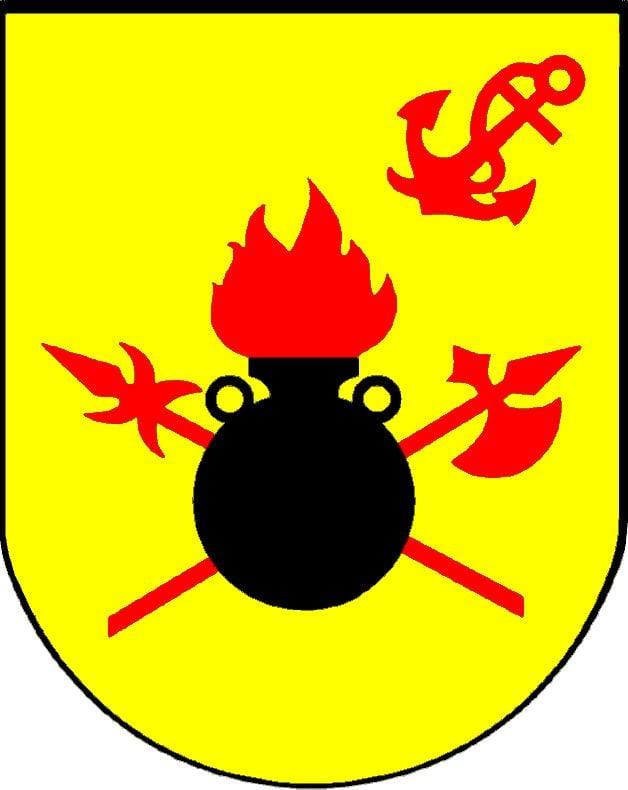Country Brazil Size 18,000 General-Command HQ Rio de Janeiro, Brazil | Type Naval infantry Part of Brazilian Navy | |
 | ||
Founded 1808; 209 years ago (1808) | ||
The Brazilian Marine Corps (CFN; Portuguese: Corpo de Fuzileiros Navais, literally "corps of naval troopers") is the land combat branch of the Brazilian Navy.
Contents
Mission
Deployed nationwide, along the coast, in the riverine regions of Amazon and in the Pantanal, in peacetime it provides for the security of Naval installations and aids isolated populations through civic action programs in the Naval Districts. Abroad, it provides security for the Embassies of Brazil in Algeria, in Paraguay, in Haiti and in Bolivia. It has participated in all of the armed conflicts in the Military history of Brazil, foreign and domestic.
The badge consists of a fouled anchor superimposed over a pair of crossed rifles. It is worn on the collar points of the dress and service uniforms and on the Ribbon Bonnet (Gorro de Fita).
The Royal Brigade of the Navy
The Brazilian Marines trace their origin to 1808 when the troops of the Royal Brigade of the Navy (the Portuguese Marine Corps) arrived in Brazil (then a Portuguese colony) when Mary I of Portugal and her son Prince Regent John (later King John VI of Portugal) relocated themselves to the Portuguese South American territory during the Napoleonic Wars in Europe.
The baptism of fire: the conquest of Cayenne
In retaliation for the invasion of Portugal, Prince Regent, Dom João ordered the invasion of French Guiana, whose capital, Cayenne, was captured on the 14th of January 1809.
Historical campaigns
After Brazilian independence the force received many names and underwent various reorganisations. It was involved in several wars and campaigns: the War of the Independence of Brazil, conflicts in the River Plate basin, and the Paraguayan War. During the latter the Corps won distinction in both the Battle of Riachuelo and in the taking of Humaitá.
United Nations service
The CFN if has participated in the humanitarian actions promoted by UN in such diverse theatres of operation as Bosnia, Honduras, Mozambique, Rwanda, Angola, East Timor and currently in Haiti (MINUSTAH).
Staff and mission
With about 15,000 men, all volunteers, professionals in combat on land, air and sea, its mission is to guarantee the projection of the naval power on land, by means of landings from Navy ships and helicopters. The Corps is an integral part of the Navy, encompassing about one third of its manpower. Ranks are naval instead of Army, with the exception of Privates, who are called Soldados (Soldiers).
In the case of Brazil this is a complex mission, since the country has a territory of about 8,5 million km² (3.28 million sq. miles), a coast of more than 7,400 km (4,600 mi) with many oceanic islands, and a navigable waterways network of approximately 50,000 km (31,000 mi). This last one includes the Brazilian Amazon. To cover climates and natural landscapes so diversified as Pampas of Rio Grande Do Sul, pantanal of Mato Grosso do Sul, deserts of the Northeast region and Amazonian Rainforest, demands a training of the highest standards, agility and versatility. Therefore, there are units trained in demolition techniques, special operations, combat in forests, mountain and ice, and helicopter-transported operations.
Trained as a Fast Deployment Unit, recently, with the sending of Brazilian military observers, also integrating the Peacekeeping Forces of the United Nations, the Marines have made their presence in distinctive areas of conflict as El Salvador, Bosnia, Angola, Moçambique, Ruanda, Peru, Ecuador, East Timor and currently Haiti.
On March 30, 2014 security forces in Rio de Janeiro occupied since the dawn of day, the set of Shantytown Tide in the North Zone of Rio. Region is being prepared to receive the Pacifying Police Unit (UPP), Brazilian Marine Corps also provide support with 21 armored vehicles and 500 men.
Organization
The Corps headquarters is located in Fortaleza de São José, Ilha das Cobras, Rio de Janeiro.
Fleet Marine Force
The Fleet Marine Force (Força de Fuzileiros da Esquadra (FFE)) consists of the following units:
Regional
"Marine Groups" (Grupamentos de Fuzileiros Navais (GptFN) are subordinate to the Naval Districts (Distritos Navais), for the security of naval installations, as well as performing operations in support of the Naval District where they are assigned, while the 7th Marine Group is also tasked for public duties in the Brasilia area. They are located in the vicinity of the local Naval District headquarters. The 8th Naval District does not possess any such group. GptFNs are small-sized Marine battalions.
Musical support is rendered by the Central Band of the Marine Corps in Rio (1st ND), the Brasilia Marine Corps Band and the Marine Drum and Bugle Corps (7th Naval District) and by the Marine Bands of each of the other Naval Districts save for the 8th ND.
Methods
To fulfill its missions, the Marines land off the ships of the Brazilian Navy, be it using landing boats, amphibious vehicles or helicopters. For this they count on the support of the navy and/or sea and air support.
On land, it operates its normal way, which include tanks, field artillery, antiaircraft artillery, combat engineering, communications and electronic warfare.
Training
To fulfill its missions, fusiliers must pass a rigorous physical training program, normally with many runs, calisthenics, sleep deprivation, swimming while holding their breath, practice shooting with diverse armaments, especially metal rings, rappeling and, in some cases, combat.
Uniforms
The Brazilian Marines wear the variation of the Brazilian Lizard Pattern, known as navy lizard . Vest's: The marines for a long time used the IBA "Interceptor body armor" in woodland, but they are now being replaced by Eagle industries Maritime Ciras with Woodland Cover, and Black for SOF. For the Comandos Anfibios is also issued a green version and black version of the WTC Recon Plate Carrier. Boot: They use Atlas Atalaia combat boots, in coffee brown.
